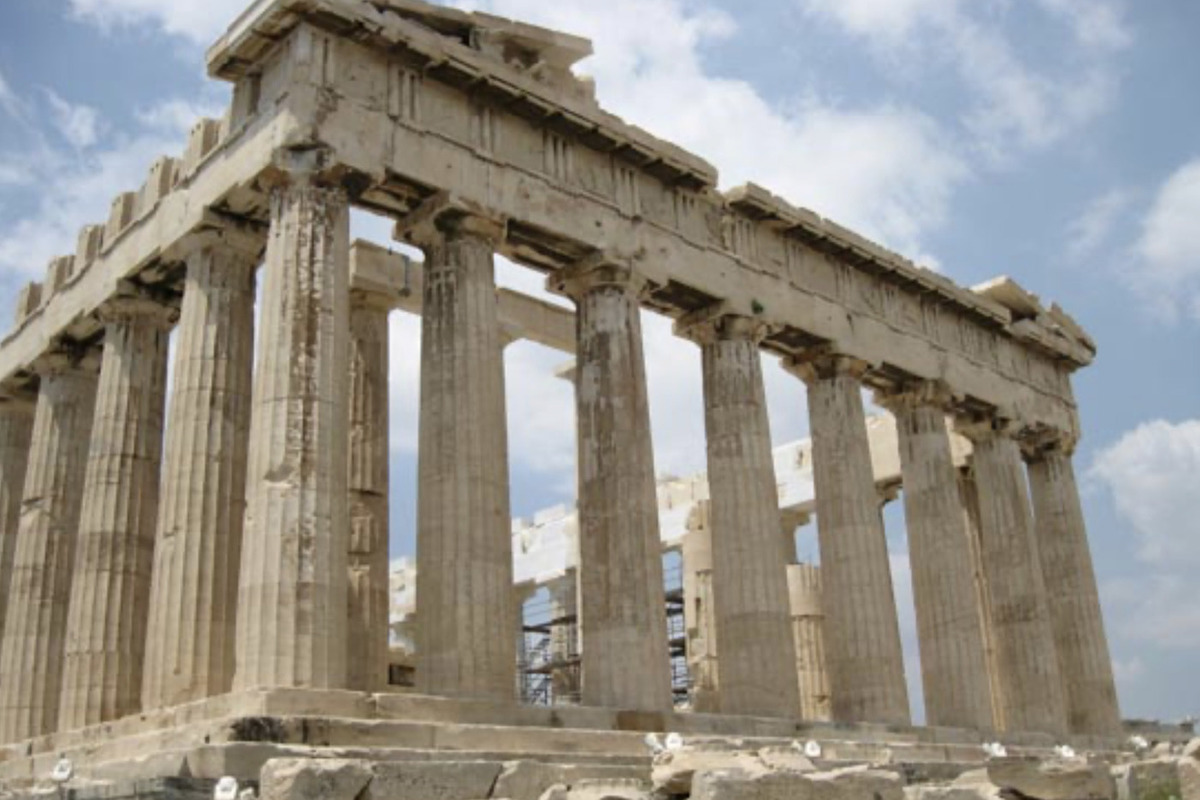“Egyptian blue”: traces of ancient paints were found on the snow-white sculptures of the Parthenon
[ad_1]

Classical Greek marble sculptures today appear white. But this wasn’t always the case, according to a new study that finds the famous 2,500-year-old Parthenon sculptures were colorfully painted with floral designs and other intricate designs.
Using a non-invasive imaging technique, researchers from the British Museum, where nearly half of the Greek Parthenon sculptures are located, and King’s College London found traces of paint on 11 of the 17 figures and on part of a frieze displayed at the museum, according to a study published this week in the journal Antiquity.
Paint often does not survive on archaeological finds, especially in cases such as the Parthenon sculptures, which date back to between 447 and 438 BC. and were constantly exposed to the environment, says lead study author Dr. Giovanni Verri, a conservationist at the Art Institute of Chicago who was previously a research fellow at the British Museum.
The researchers detected microscopic traces of the paint using infrared radiation, which is absorbed by the blue paint and appears as a glowing white color on the camera.
“They’re just thin layers of paint at the very, very top of the surface of these objects, and so they’re at the interface of everything that’s going on. The paint is the first to sense the effects of the environment, says Dr. Verry. “It’s also possible that during conservation procedures—restoration procedures—these small marks that actually looked like dirt were inadvertently removed.”
As CNN recalls, Greece has repeatedly called for the return of sculptures that British diplomat Lord Elgin removed from the majestic Parthenon temple in Athens in the early 19th century, when he was ambassador to the Ottoman Empire, which then ruled Greece.
The technique used to find the paint was created in 2007 and is known as visible luminescence imaging. The process uses infrared light to detect microscopic traces of paint that are invisible to the eye, Verry said. When the sculptures are illuminated with red light, a pigment known as “Egyptian blue” absorbs the light and appears as a glowing white color to the camera.
According to the Royal Society of Chemistry, “Egyptian blue” was a popular pigment of its time that was produced using calcium, copper and silicon. The bright blue color was highly prized for its rarity and was usually reserved for royalty or images of gods and goddesses.
The distinctive blue color was found in several places in the marble, including the snake’s tail on a sculpture of the mythical king Cecrops, in the background of statues of Demeter and Persephone, and on the clothing of Dione, mother of Aphrodite, where the formation of two flower petals was found at the bottom of the fabric, according to the study.
“The interpretation of these very small traces is always difficult,” comments Dr. Verry. “So we make assumptions about these patterns by comparing them to other works of art.”
The researchers also discovered a purple color that was detected not by the imaging process, but by the human eye, Verry said. The hue, which they called “Parthenon purple,” is particularly unique, the study said, because the researchers found that it was not prepared using shellfish, a common ancient Mediterranean recipe.
The clam-based purple color can be detected using a technique called x-ray fluorescence, but in this case the color was missing, Verry said.
Classic texts mention the elusive color purple, the study says, but the ingredients are not disclosed because the color is considered so valuable.
“This recent study provides further evidence that colorful decoration was common in ancient Greek art,” said Michael Cosmopoulos, professor of archeology and Greek studies at the University of Missouri in St. Louis. “This is a big deal because it challenges the traditional Western idea that classical art was just white marble and shows how important color was to ancient Greek artists. These findings help us understand the creative process behind them, as well as the significance of the Parthenon and its sculptures.”
At this stage, reconstructing the original appearance of the sculptures is “really impossible,” notes Dr. Verry, because imaging technology has only revealed blue paint, and “because reproducing in modern terms one of mankind’s greatest masterpieces is not something to be taken lightly.” .
“What we were really able to demonstrate was not specific surfaces to apply paint to, but rather that both carving and color were intended as part of the same purpose,” said William Wootton, study author at King’s College London. “Extreme care and attention to the making of sculpture—both its carving and color—was in fact noticeable throughout the ancient world to a level that we are still just beginning to understand.”
The study points to earlier cases in which Greek sculptures were found painted, such as in 2008, when restorers at the Acropolis Museum in Athens discovered greenish pigment on the western frieze of a horseman. Dr Verry hopes that more images will soon be developed to find other colors present in ancient sculptures.
[ad_2]
Source link








